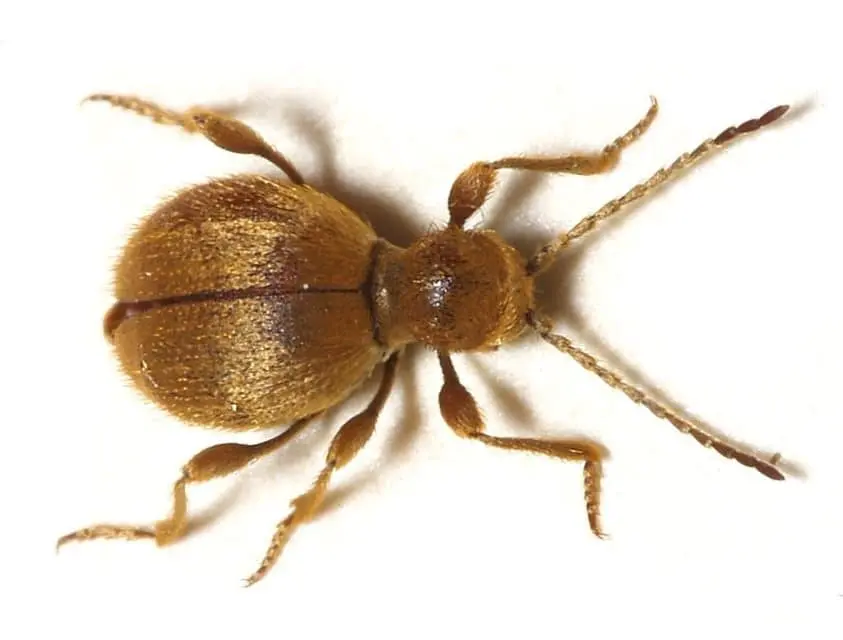Outside of pest control, stored product pests are often overlooked, but they could be lurking around your home. You might have encountered moths or beetles without realizing it. These pests are attracted to food sources such as grains and fabrics made from animal fibers like wool or fur. While they can be a nuisance, in their natural habitats, they play a vital role in breaking down biological materials. In this article, we’ll discuss the common species of stored product pests, their behaviors in your home, and effective prevention strategies.
Common Stored Product Pests
Food Pests vs. Fabric Pests
There are two main categories of stored product pests: those that infest food and those that infest fabrics.
- Food Pests: Seek grains, cereals, and flour. Common species include:
- Drugstore Beetles
- Cigarette Beetles
- Spider Beetles
- Granary Weevils
- Indian Meal Moths
- Fabric Pests: Target clothing and materials such as wool, hair, and silk. Common species include:
- Carpet Beetles
- Webbing Clothes Moths
- Casemaking Moths
Other pests like silverfish, firebrats, booklice, and mites may also target both food and fabrics, making prevention crucial.
Beetles
Carpet Beetles
Carpet Beetles are common in the Pacific Northwest and can feed on both food and fabric sources. Small and often mottled, they measure between 1/16” and ¼” long. In their larval stage, they have a long, hairy body with distinct tufts of hair.

(Image of a Carpet Beetle)
Adult Carpet Beetles can enter homes accidentally and are attracted to pollen and animal proteins. Larvae typically hide in dark, undisturbed areas like dresser drawers or corners of closets.
Drugstore Beetles and Cigarette Beetles
Drugstore and Cigarette Beetles are often confused with each other. Both measure around ? inch and are reddish-brown. The Drugstore Beetle has distinct grooves on its wings, while the Cigarette Beetle does not.

(Image of a Drugstore Beetle)
These beetles can burrow through wood to access food sources. Drugstore Beetles are commonly found in dried pet food and spices, whereas Cigarette Beetles target tobacco products.
Spider Beetles
Spider Beetles are named for their round shape and long legs, ranging from 1/16” to ?” long. They can withstand colder temperatures, as long as there's humidity. These beetles feed on various foodstuffs including grains, dried fruits, and even organic debris.

(Image of a Spider Beetle)
They are often found in poorly maintained areas, and their nocturnal activity can make infestations hard to notice. Keeping storage areas clean and food secured is key to prevention.
Moths
Indian Meal Moth
The Indian Meal Moth is a common food pest characterized by its reddish-brown outer forewings. With a wingspan of about ¾ inch, they are often found infesting stored grains.

(Image of an Indian Meal Moth)
Females can lay up to 300 eggs, leading to small caterpillars that consume grains, dried fruits, and nuts.
Webbing Clothes Moth and Casemaking Clothes Moth
The Casemaking Moth is particularly drawn to clothing and animal-based materials. It carries a silken case while feeding, while the Webbing Clothes Moth is attracted exclusively to fabrics.

(Image of a Casemaking Moth)
Both are small, only about ½ inch long, and their larvae can be highly damaging to fabrics.
Preventing Infestations
To effectively prevent stored product pests, regular cleaning and humidity control are essential. Consider the following tips:
- Store grains and flours in airtight containers.
- Limit stored foodstuffs to less than six months.
- Keep areas free of crumbs and spills.
- Check for and address any moisture issues.
- Regularly vacuum carpets and furniture.
- Maintain a clean environment to deter pests.
How Sunrise Can Help
Sunrise Pest Management offers comprehensive pest control services tailored to address stored product pests like beetles and moths. With our All Pest Protection program, you receive quarterly maintenance aimed at preventing infestations.
Each quarter, our technicians will inspect your home, apply preventative measures, and ensure that your environment remains pest-free. Should you discover an infestation under our warranty, we’ll provide targeted treatments at no additional cost.
Contact Sunrise Pest Management
For tailored pest control solutions in your area, including Port Townsend and Bremerton, contact Sunrise Pest Management today for a complimentary quote. Protect your home from stored product pests and enjoy the peace of mind that comes with a pest-free environment.



Comments (0)
Thanks for your comment!
Thanks for your feedback! Your comments have been successfully submitted! Please note, all comments require admin approval prior to display.
Error submitting comment!
There is a problem with your comment, please see below and try again.